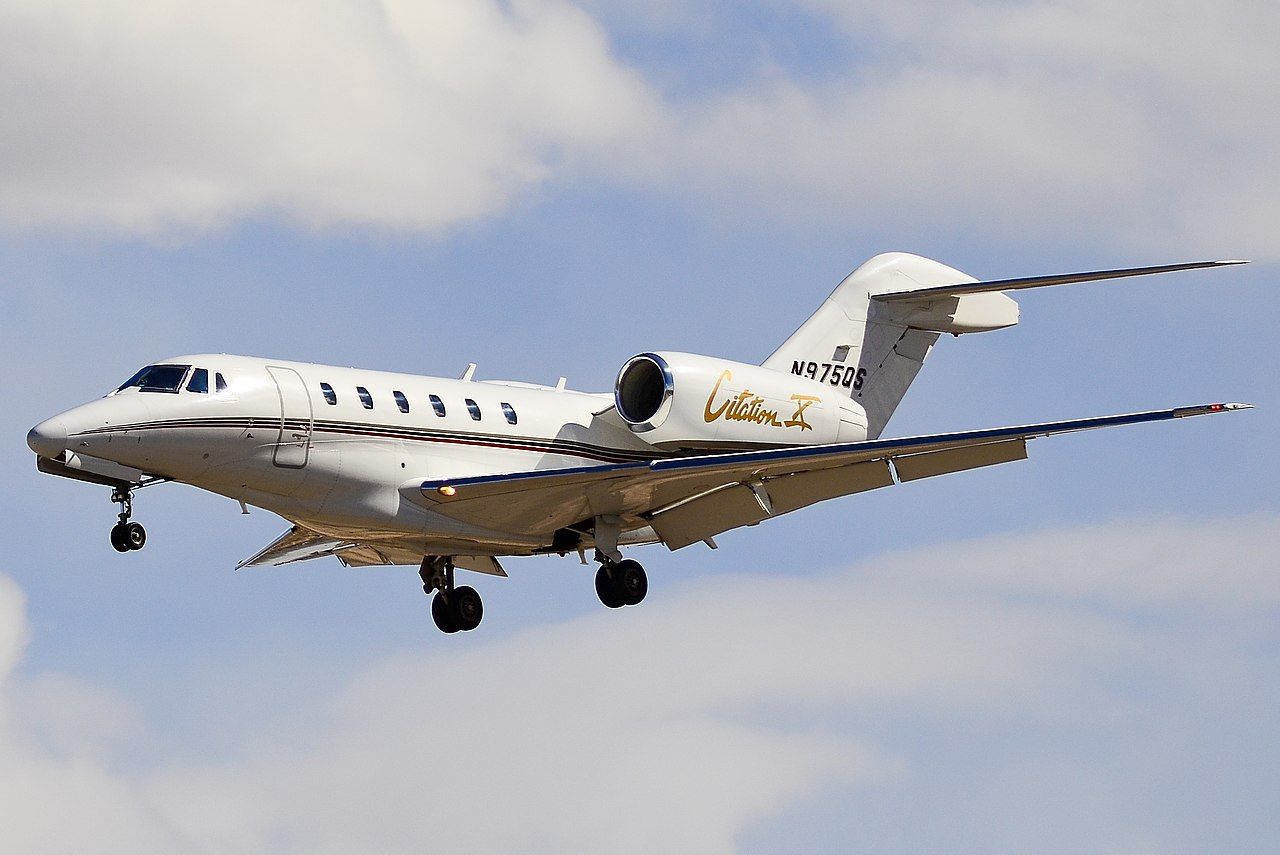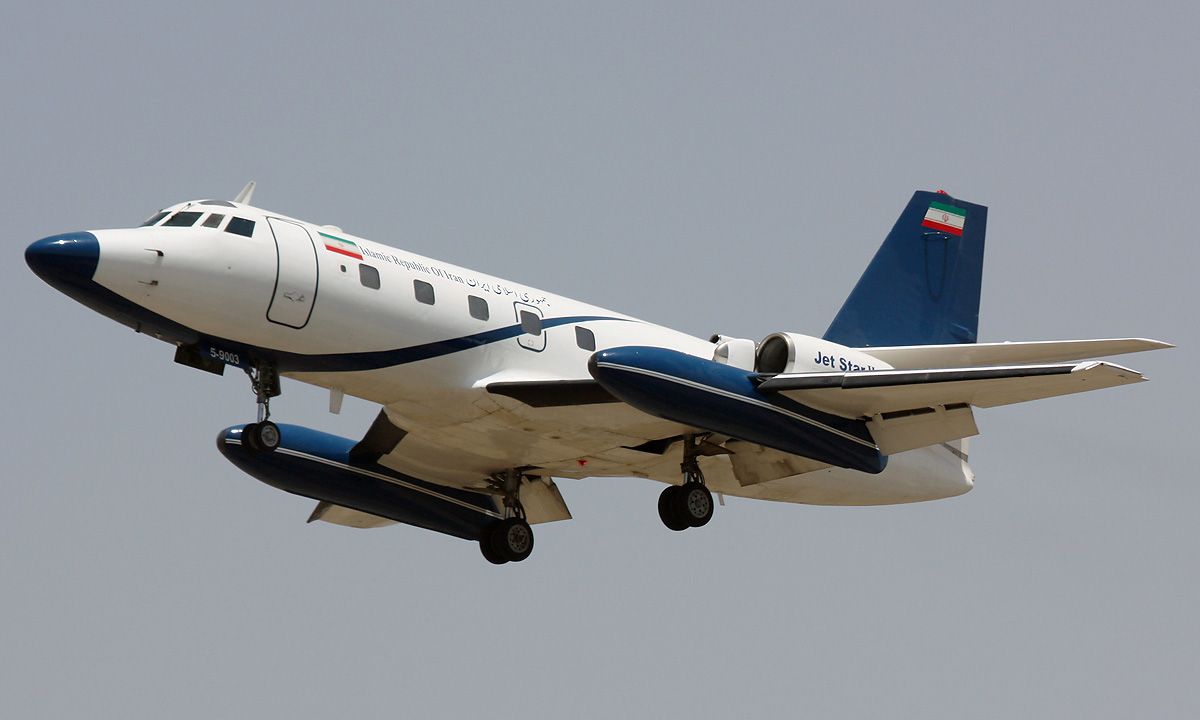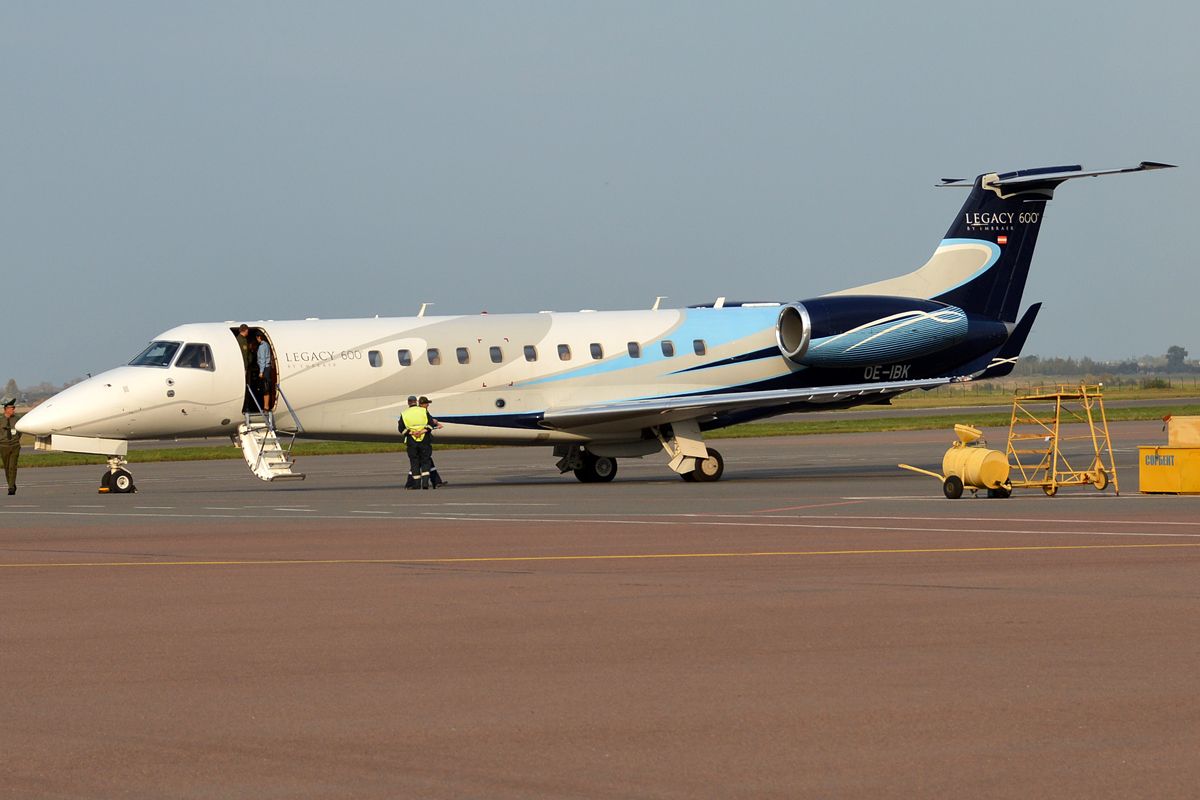Because they are associated with celebrities and the wealthy, it's easy to assume that private jets fly faster than commercial airliners. While generally speaking, some private jets are faster than commercial planes. Many things determine how fast a plane can go.
In the early 1950s, French aircraft manufacturer Morane-Saulnier is credited with building the first private jet, the four-seat Morane-Saulnier MS.760 Paris. Initially created to be a jet trainer for the French Air Force, when orders for the plane were canceled, Morane-Saulnier tried to sell it as a small business jet.
The early sales of private jets did not go well
The plane had a top speed of 400mph and a cruising speed of 350mph. Despite agreeing to a joint venture with Beechcraft, sales were not spectacular, even though the plane was the only one of its kind in the marketplace. The plane's failure led to Cessna and Douglas canceling their business jet plans.
Again initially designed for military use, the ten-seat Lockheed JetStar made its maiden flight on September 4, 1957. Furthermore, just like in France, the United States Air Force (USAF) dropped its plans, leaving Lockheed to market the aircraft as a private business jet. The Lockheed JetStar had a top speed of 547 mph and a cruising speed of 504mph.
During the 1960s and 1970s, several companies started building business jets:
- British Aerospace 125, with a top speed of 598 mph and cruising speed of 522mph.
- Dassault Falcon 20, with a top speed of 536 mph and cruising speed of 470mph.
- Learjet 23, with a top speed of 561 mph and cruising speed of 518 mph.
- Grumman Gulfstream II, a long-range, large business jet with a top speed of 647 mph and cruising speed of 586 mph.
- Cessna Citation I, with a top speed of 536 mph and a cruising speed of 411 mph.
- On November 7, 1976, the three-engine Dassault Falcon 50 made its maiden flight. The aircraft had a top speed of 654 mph and a cruising speed of 561 mph.
- The Canadair Challenger made its maiden flight on November 8, 1978. It had a top speed of 647 mph and a cruising speed of 608 mph.
During the 1980s, no new business jets were to arrive, just improved versions of the ones still in production. Brazilian aircraft manufacturer Embraer eventually debuted its Legacy 600 based on the ERJ 135 commercial jet. The Embraer Legacy 600 has a top speed of 528 mph and a cruising speed of 525mph.
While speed is a factor that will appeal to many business jet charter customers, it is not necessarily a deciding factor for people who fly themselves. For years Cessna prioritized straight wings over swept-back wings. Cessna thought that many of the people purchasing private jets would be transitioning from piston or turboprop-powered planes and that they would like to have the ability to continue using short runways and a low approach speed.
The Cessna Citation was the fastest business jet
Although the manufacturer wanted to cater to private buyers, Cessna knew charter firms wanted fast private jets. The Cessna Citation X made its maiden flight on January 17, 2012. It quickly became the rocket ship of business jets with a maximum speed of 717 mph and a cruise speed of over 600 mph.
Want answers to more key questions in aviation? Check out the rest of our guides here.
Bombardier's new Global 8000 will be the new king of speed
Set to enter the marketplace in 2025, Bombardier's upcoming new flagship, the Global 8000, exceeded the speed of sound during flight tests. On May 18, 2021, the Global 8000 reached a speed of Mach 1.015 (778 mph) to become the fastest passenger plane since Concorde. As well as its incredible speed, the Global 8000 has a range of 9,200 miles.
Until the new Bombardier business jet is formerly introduced, however, the fastest of such aircraft is the Cessna Citation X+, an updated version of the Citation X. Although it can fly at speeds up to Mach 0.935, the variant didn't sell particularly well, and the type has been since discontinued, with just under 30 examples produced. In any case, many private jets are rated to fly at significantly higher speeds than their commercial counterparts.



